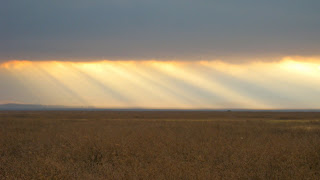My motivation to study and learn grows every time I stand in the operating room or adjacent to patients’ beds during rounds. As my “trip” in East Africa winds down, a new motivation to study and academically succeed grows. Hit those books. Write those notes. Attend those lectures. Watch them again!
How do I maintain this energy in the middle of the school year when I’m filled with stress, fatigue, and junk food? My first year punched me in the face because I lost motivation to persevere. Though I did well enough, I could have done better, and I think the key to improvement involves reminding myself why I’m doing this. I need to get clinical exposure at least once a week throughout the school year.
Our hospital back in New York offers a plethora of opportunities to see patients – even if it is behind Plexiglas. I can watch surgeries. I can volunteer. I can shadow professors. I can conduct research. Also, a friend of mine from synagogue volunteers at the local HIV/AIDS non-profit and offered to get me in.
I never found the need to do this last year; I resorted to my usual undergrad habit of running several student organizations and planning events, which I enjoy. However, if I plan to stay sane during the trials of the next 10 months until my USMLE, I will need to switch my extracurricular priorities.





















































